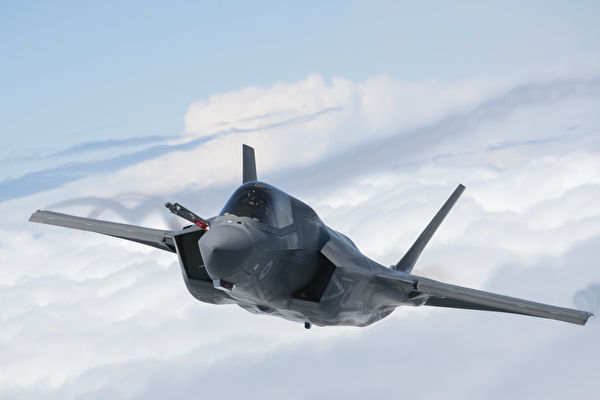In recent years, the F-35 Lightning II, the fifth-generation fighter jet of the United States, has emerged as the pinnacle of American combat aircraft engineering and technology. With over a thousand units sold, the F-35 has become a mainstay fighter in countering military expansion from both China and Russia.
Deployed around the globe, the F-35 serves various strategic purposes. NATO members utilize the F-35 to counter Russia, Israel with its F-35I Adir variant to confront Iran, and countries like Japan, South Korea, and Australia employ F-35s to deter Chinese aggression. The exceptional performance of the F-35 and its strategic presence in the Indo-Pacific region have served as a strong deterrent against Chinese assertiveness.
Recent activities by China, such as impeding Filipino resupply ships in the South China Sea and frequent harassment near Taiwan’s airspace and waters, have heightened regional tensions. The escalating behavior of the Chinese military in the Indo-Pacific has prompted American allies in the region to bolster their defense capabilities, with the procurement of F-35 jets being a key aspect.
Countries like Australia, Japan, South Korea, and a Southeast Asian nation have all procured F-35 jets from Lockheed Martin. While their motivations may vary, the common factor is the threat posed by China. The presence of international F-35 squadrons in the Asia-Pacific region significantly strengthens regional defense capabilities and promotes peace.
Among the three variants of the F-35 fighter jet – F-35A for conventional runway takeoff and landing, F-35B for short takeoff/vertical landing, and F-35C for carrier-based operations – each serves a specific role in enhancing military capabilities.
Australia and Japan, in particular, are closely monitoring the Chinese threat. South Korea, apart from China, also acknowledges the threat posed by North Korea. Notably, Australia boasts one of the largest fleets of F-35 aircraft globally, second only to the United States, further underscoring the significance of F-35 deployments in the region.
These F-35 fleets from various countries, complemented by the US military’s presence in the Indo-Pacific, form a formidable alliance capable of not only deterring Chinese aggression during peacetime but also outmatching China’s J-20 fighter jet in combat scenarios.
In a statement released by Lockheed Martin earlier this year, joint training exercises involving F-35 and F-16 jets from the US, alongside their Korean and Australian counterparts, were conducted to enhance interoperability among regional allies.
Furthermore, exercises between US Air Force F-35s and Japanese aircraft over the East China Sea underscore the proactive measures taken to contain aggression and maintain regional peace and stability.
Robbin Laird, an international defense consultant with the Defense Information Institute, highlighted the pivotal role of the F-35 in shaping a new attack/defense paradigm that empowers the US and its allies to safeguard their interests effectively. The seamless integration of F-35s into a global fleet in the Pacific region contributes significantly to 21st-century strategic capabilities.
Despite the strengthening deployment of F-35 jets by US allies, the US military maintains its dominance with F-35s in the Indo-Pacific region. The recent announcement of the deployment of 48 F-35A stealth fighters to the Misawa Air Base in Aomori Prefecture, Japan, underscores the continued commitment to enhancing deterrence capabilities in the region.
The imminent arrival of the USS George Washington aircraft carrier in Japan, accompanied by a squadron of F-35 fighter jets at the Iwakuni Air Base, further demonstrates the US Navy’s resolve to counter new Chinese stealth fighters using fifth-generation aircraft.
Defense analysts emphasize that deploying F-35C stealth fighters on carriers in Japan signifies a significant enhancement of US military capabilities to effectively counter Chinese stealth fighter threats.
Masashi Murano, Chief Researcher at the Hudson Institute in Japan, highlighted the tactical advantages of the F-35C in aerial combat against new Chinese fighters and countering anti-ship ballistic missiles and cruise missiles launched by Chinese bombers.
Lockheed Martin envisions a base of over three hundred F-35 jets in the Indo-Pacific region by 2035. With China enhancing J-20 patrols in the South China Sea and East China Sea to challenge American F-35 and F-22 jets, the F-35 remains superior, maintaining US air dominance in the Pacific region.
Regarding the technology aspect, F-35’s engines, manufactured by Pratt & Whitney, boast a proven track record of reliability spanning nearly a century. While China has attempted to replicate technologies through espionage, its engine technology continues to lag behind.
In conclusion, Israel’s combat-proven experience with the F-35 brings a critical advantage. In contrast, the J-20 remains untested in actual combat situations. The superior stealth capabilities of the F-35, coupled with its combat experience, position it as a formidable force against potential adversaries like the J-20.

